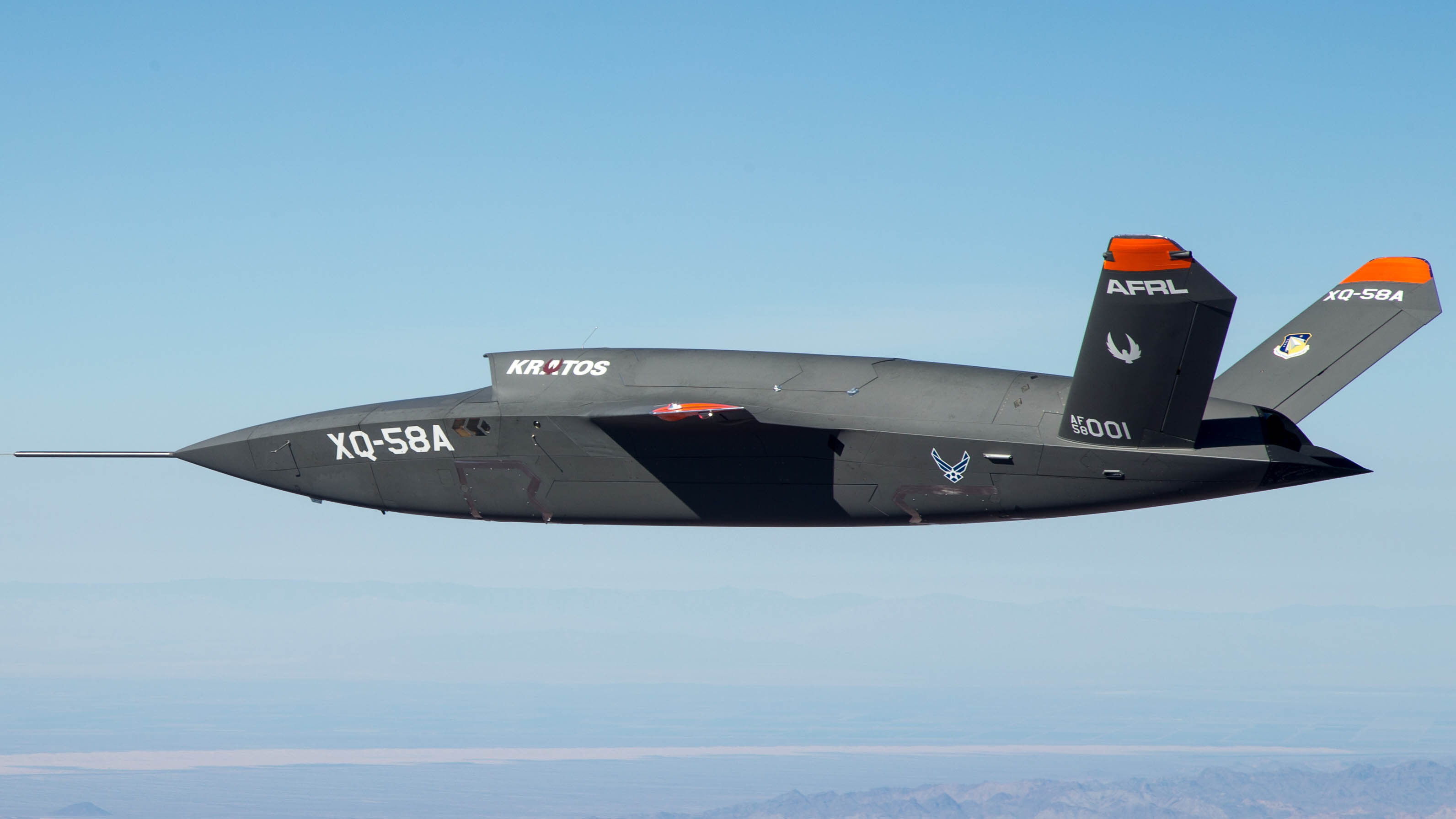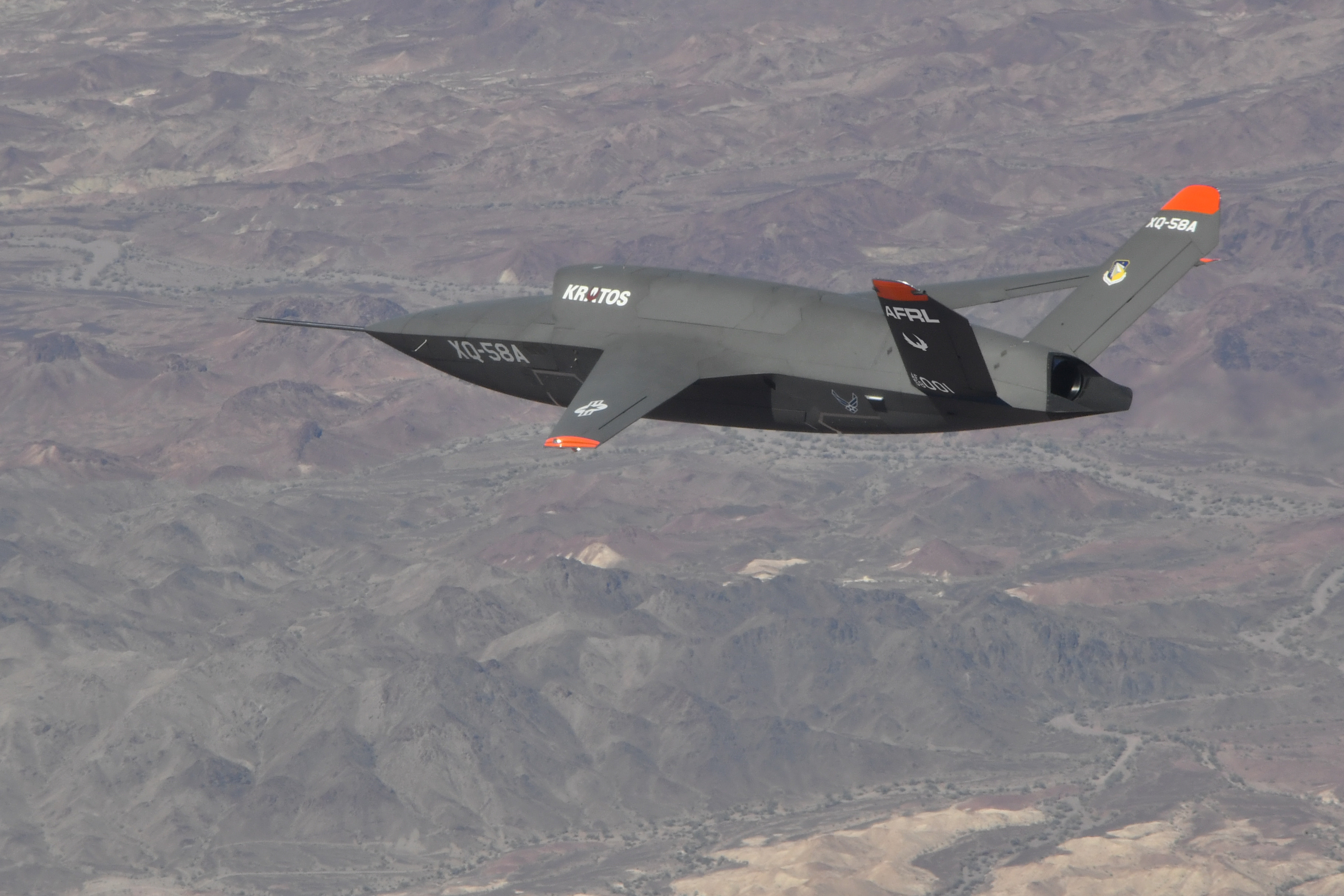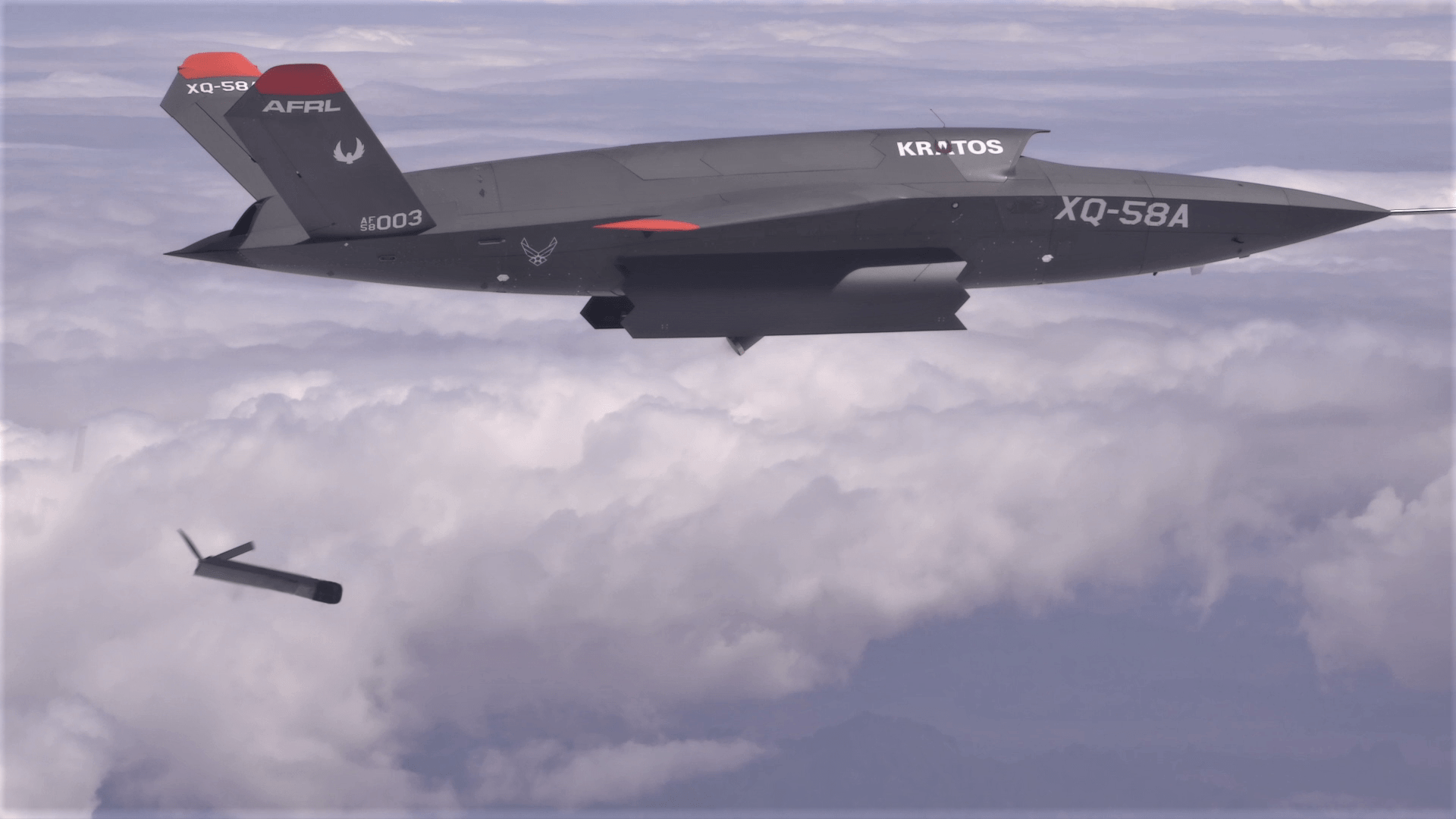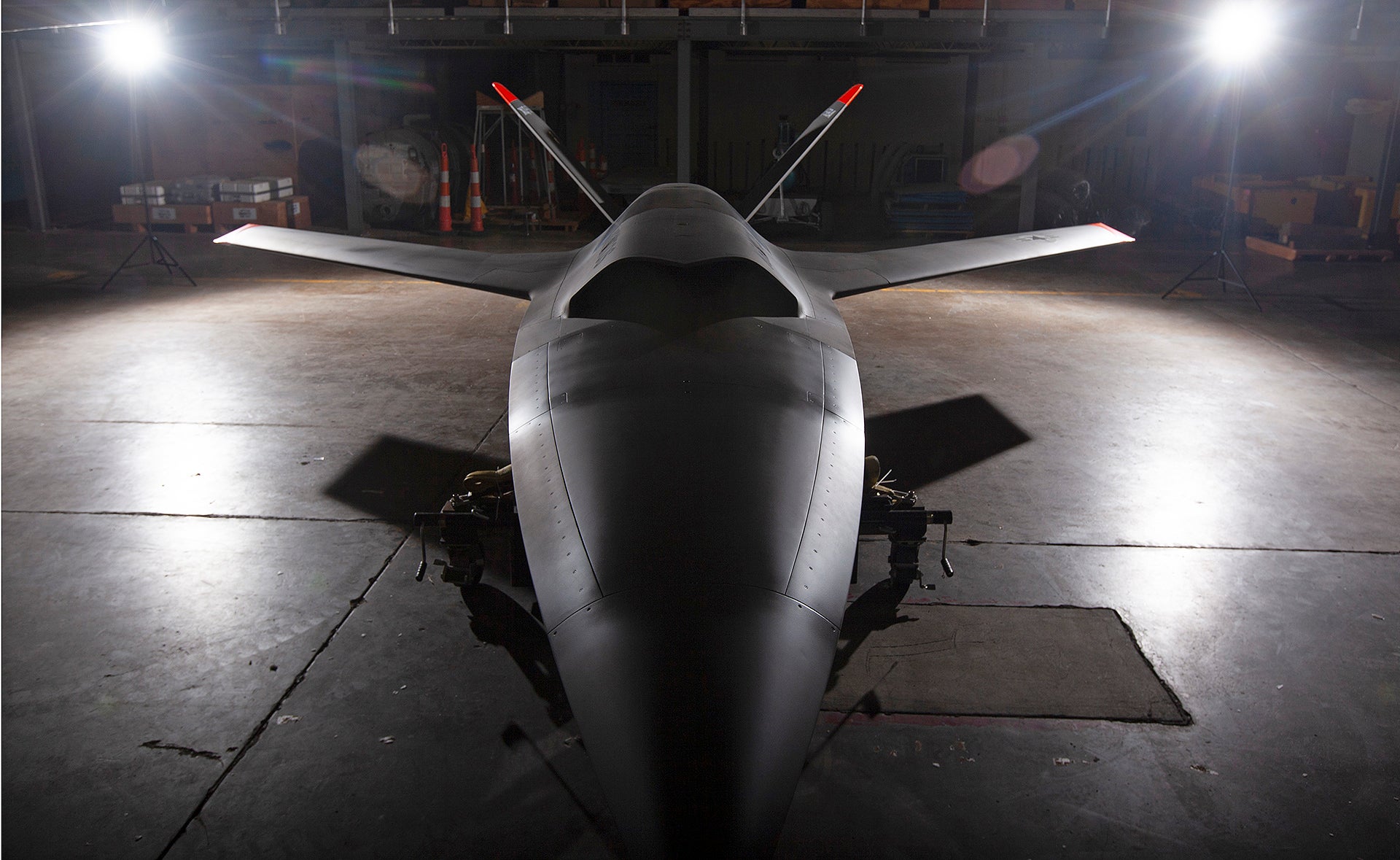The first of the U.S. Air Force’s XQ-58A Valkyrie stealthy, affordable unmanned aircraft is being prepared as a museum exhibit, after completing its flight-test career after just four public missions. Originally developed by drone-maker Kratos under the Low Cost Attritable Aircraft Technology program, or LCAAT, the XQ-58A in question suffered a mishap in late 2019 while completing its third flight, but was subsequently repaired and flew again.
The Air Force Research Laboratory, or AFRL, which developed the XQ-58A together with Kratos, announced yesterday that Valkyrie serial number 15-8001, which took its first flight in March 2019, is now headed to the National Museum of the United States Air Force at Wright-Patterson Air Force Base in Ohio. Preparations to transfer “Tail Number 1” to the museum were underway as of last month and the press release suggests it may already be there, albeit not yet on display.

“Kratos manufactured this aircraft and AFRL conducted flight tests with it four times,” explained Dave Hart, the chief engineer for the Autonomous Collaborative Platforms program, in an Air Force press release. “Transferring it to the Air Force Museum helps to show the world what AFRL is capable of, and it truly tells the AFRL story.”
“The XQ-58A Valkyrie represents a sea of change in the way the Air Force can approach the design, development, production, and operation of unmanned aircraft,” added Steve Fendley, the President of Kratos Unmanned Systems Division. “The Valkyrie is the first Department of Defense aircraft system to break the historical cost per weight parametric, and it is the first UAV designed to operate with fourth and fifth-generation manned aircraft.”
The same press release also notes the collaborative nature of the XQ-58A program so far, pointing out that AFRL’s Aerospace Systems Directorate was responsible for “critical turbine inlet integration, structural testing, and evaluation of the XQ-58A’s electrical and control subsystems.”
Kratos designed, built, and demonstrated the first XQ-58A with only two and a half years between contract award and first flight, with this rapid prototyping effort being a fundamental aspect of the program, at least at the outset.
The manufacturer describes the first of the 30-foot-long XQ-58A drones as “a pre-production system with substantial operational capability, not simply a proof-of-concept flight demonstrator.”

After suffering damage in a crash landing in October 2019, 15-8001 was repaired and returned to the air the following January, for a fourth flight, although it’s not understood to have flown again after that. It should be pointed out, however, that there’s no sign that the accident contributed to the drone’s very brief flight-test career.
In just four flights, 15-8001 has provided data for the LCAAT program, which has, in turn, helped inform the Skyborg project, an initiative that’s working to develop the technologies required for semi-autonomous “loyal wingman” type drones and, ultimately, pave the way to fully autonomous unmanned combat air vehicles (UCAVs). Kratos is one of three companies now working to build a prototype drone that will be equipped with Skyborg systems and one of its UTAP-22 drones has already been used as a testbed for Skyborg.
Whether directly related or not, the fact that it’s now been determined that the first XQ-58A will no longer be a part of the LCAAT program or other test work might even speak to the fact that the drone was always at the core of the Air Force’s work on attritable platforms. Essentially, drones that are low-cost enough that they can be employed in high-risk situations that might preclude the use of a more costly asset. In the case of the XQ-58A, Kratos has in the past mentioned a unit cost of around $2 million, under full-rate production.
At the same time, the XQ-58A fleet at large has rapidly racked up important milestones.

The second of these drones, 15-8002, has been used to explore attritable drone concepts of operation, as well as a testbed for new communications gateways to help different stealthy aircraft “talk” to each other.
Meanwhile, the third, 15-8003, was used for the first stores release from the drone’s internal payload bay, dropping an example of the much smaller ALTIUS-600 drone during a flight at the U.S. Army’s Yuma Proving Ground, Arizona, in March this year. That was only the sixth flight in total for the XQ-58A program and you can read more about its implications here.
At the same time, the XQ-58A fleet has been used to expand the type’s operating envelope, flying increasingly faster and higher, while Kratos is engaged in building at least another nine Valkyries.

In the past, The War Zone has looked at the kinds of missions that a production version of the XQ-58A, or a further evolved stealthy, attritable drone might perform. As well as flying more hazardous sorties, such as those pertaining to electronic warfare, or intelligence, surveillance, and reconnaissance (ISR), within contested airspace, there is scope for the drones to work as loyal wingmen or even as networked swarms in a host of other scenarios. They could even be used as advanced cruise missiles. With the ability to launch payloads including other drones, the scope of its potential missions is increased even further.
It’s also worth noting that the XQ-58A is being developed to be runway independent, further boosting the utility of any future production versions of the drone. Kratos has, in the past, shown a model of a launcher for the Valkyrie that can be accommodated inside a standard shipping container. That would make the drone even more suitable for distributed operations of the kind that are growing in importance under the Pentagon’s emerging warfighting strategy.
As already noted, the Valkyrie was designed from the outset to be a low-cost yet advanced drone, ensuring that, in the future, unmanned loyal wingmen can not only venture into more hostile environments from which they may well not return but also serve to increase the “mass” brought to bear on a potential enemy. This would be especially important when drones are being used to overwhelm or confuse hostile air defenses, for example.
With that in mind, it’s perhaps fitting that the first of the XQ-58As — representing what could well be a paradigm shift in air combat — will now see out its days on public display at the National Air Force Museum.
Update, 14:30 pm PST: A tweet from Aviation Week Defense Editor Steve Trimble confirms that the retirement of the first XQ-58A Valkyrie drone to a museum was, for the most part, a result of its baked-in attritable nature. Trimble provides an email correspondence with an Air Force public affairs officer that he received today, in which they explain that the decision was taken not to spend any more on the first XQ-58A, since “extensive upgrades or repairs” are not applicable to these kinds of attritable platforms.
In contrast to the AFRL press release, the PAO said the first XQ-58A only ever completed three flights, being retired after its crash landing in October 2019. Total flight time was around three hours and, in all, the three Valkyries have now completed seven flights.
The correspondence concludes with confirmation that the XQ-58A is due to begin Skyborg-related test flights later this year and in 2022.
Contact the author: thomas@thedrive.com
